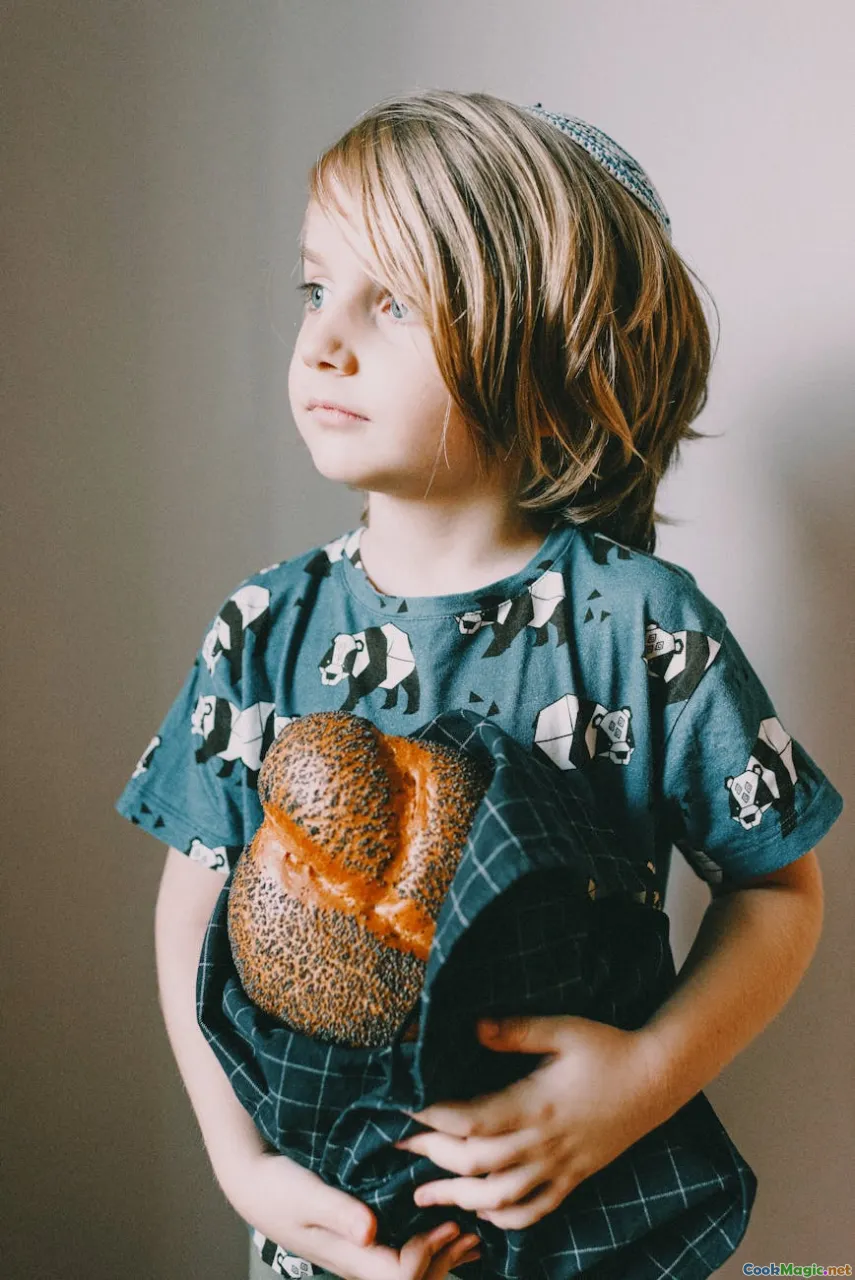Baking Challah and Preserving Jewish Family Heritage
8 min read Discover the rich history and personal stories behind baking challah, a beloved Jewish tradition that preserves family heritage across generations. April 24, 2025 18:55
Baking Challah and Preserving Jewish Family Heritage
Imagine the warm aroma of freshly baked challah wafting through a cozy kitchen, mingling with stories passed down through generations. For many Jewish families, challah is much more than a simple bread—it's a symbol of tradition, faith, and community. Its golden crust, soft interior, and intricate braided design carry centuries of history, personal memories, and cultural identity. In this article, I invite you to explore the profound significance of baking challah, how it serves as a vessel for preserving Jewish heritage, and personal stories that highlight its enduring place in family life.
The Cultural and Historical Roots of Challah
Challah's origins trace back thousands of years, rooted in ancient Jewish customs and biblical traditions. Traditionally, challah is made on the Sabbath and Jewish holidays, symbolizing the manna that fell from heaven during the Israelites' journey through the desert. The word "challah" itself is derived from the Hebrew term for a portion of dough set aside as an offering, a practice dating back to biblical times.
Historically, challah was more than just bread; it was a sacred offering, a ritual ingredient that connected families to their faith and ancestors. Over centuries, this ritual evolved into a communal baking tradition, where each family’s recipe became a unique expression of their heritage.
The Personal Significance of Baking Challah
For many Jewish families, baking challah is a deeply personal act—an opportunity to reconnect with roots, honor ancestors, and pass on traditions to the next generation. I recall my grandmother’s kitchen, where the air was thick with the scent of yeast and honey. Her hands, weathered yet gentle, would expertly braid the dough, transforming simple ingredients into a symbol of love and faith.
Baking challah is also a sensory journey. The sticky, pliable dough feels like a living thing beneath your fingertips. As it rises, it transforms from a dense mass into a light, airy loaf. The smell of warm, toasted challah on a Friday evening is an aroma that instantly evokes feelings of belonging and continuity.
The Ritual and Technique of Making Challah
Ingredients and Preparation
A traditional challah recipe often includes high-quality flour, fresh yeast, eggs, water, sugar, and a generous pinch of salt. Some families add honey for sweetness or seeds like sesame or poppy for texture and flavor.
The Art of Braiding
Braiding challah is a skill that combines artistry with tradition. The most common braid is the three-strand, but some families incorporate four, six, or even more strands, each pattern imbued with symbolic meaning. The process begins with dividing the dough into equal portions, then carefully rolling and stretching each piece before weaving them into an intricate braid.
The Final Touch
Before baking, the challah is often brushed with egg wash, giving it a glossy, golden sheen. Some sprinkle it with seeds or sugar to add visual appeal and flavor. Baking at the right temperature ensures a crust that’s crispy yet tender inside.
Preserving Heritage Through Baking
Family Recipes and Variations
Every family’s challah recipe is a story in itself—passed down orally, adapted over generations, and tailored to personal taste. Some families incorporate spices like cinnamon or cardamom, while others use whole wheat or gluten-free flours. These variations reflect cultural influences and individual preferences, making each challah unique.
Passing Down the Tradition
In many households, the act of baking challah is a communal event. Children learn by watching and participating, creating a sense of continuity. During holidays like Shabbat or Rosh Hashanah, families gather around the table, breaking bread and sharing stories that reinforce their collective identity.
Challenges and Modern Twists
Today, many Jewish families face the challenge of maintaining traditions amid busy, modern lives. Some turn to online resources or baking classes to hone their skills. Others experiment with contemporary flavors—adding chocolate chips or incorporating local ingredients—to keep the tradition alive and relevant.
Personal Stories of Connection and Heritage
A Family Tradition Revisited
My own journey with challah began in my grandmother’s kitchen, where I learned to braid my first loaf at age ten. That moment was more than about baking; it was about listening to her stories of ancestors who fled persecution, settling in new lands and establishing roots through food.
Every Friday, I replicate her recipe, feeling her presence through each fold and braid. The challah becomes a tangible link to my heritage, a symbol of resilience and faith.
Passing the Torch
Recently, I taught my younger sister how to bake challah. Watching her carefully divide the dough and skillfully braid it reminded me of my grandmother’s patience and love. It’s a small act, but it preserves a vital piece of our family’s history, ensuring that the tradition endures for future generations.
The Emotional and Social Power of Challah
Sharing challah is an act of community. Whether at a holiday meal, a neighborhood gathering, or a charity event, breaking bread together fosters connection and understanding. The act of baking and sharing challah transcends individual families, weaving a larger tapestry of cultural identity.
Conclusion: A Living Heritage
Baking challah is more than a culinary practice; it’s a living act of cultural preservation. It embodies history, faith, family, and community—each loaf a testament to resilience and continuity. Through the simple yet profound act of kneading dough and braiding bread, we keep our heritage alive, passing stories and traditions from one generation to the next.
So, whether you’re a seasoned baker or a curious newcomer, I invite you to embrace the art of baking challah. Let each loaf be a bridge to the past and a gift to the future—an enduring symbol of identity, faith, and family that rises as beautifully as the bread itself."









